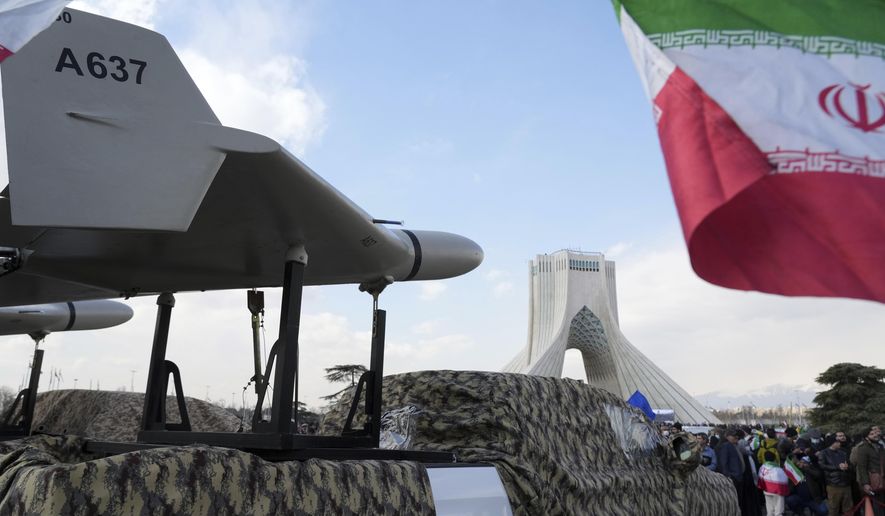The U.S. carried out retaliatory airstrikes late Thursday after a suspected Iranian drone killed an American contractor and wounded at least five troops, the Pentagon said. A second U.S. contractor was also wounded in the drone attack on an American base outside the northeastern Syrian city of Hasakah.
The Defense Department said in a statement the drone appeared to be of Iranian origin and U.S. Central Command said the attack was carried out by “groups affiliated with Iran’s Islamic Revolutionary Guard Corps (IRGC).” U.S. officials did not name any specific group, but the Iran-backed militias Kata’ib Hezbollah and Kata’ib Sayyid al-Shuhada have launched repeated assaults on U.S. troops in both Syria and Iraq over the past several years.
But rarely have those attacks resulted in the death of American personnel. With Thursday’s attack having killed one American and wounded a half dozen others, the Pentagon responded quickly.
“At the direction of President Biden, I authorized U.S. Central Command forces to conduct precision airstrikes tonight in eastern Syria against facilities used by groups affiliated with Iran’s Islamic Revolutionary Guards Corps,” Defense Secretary Lloyd Austin said in a statement late Thursday evening. “The airstrikes were conducted in response to today’s attack as well as a series of recent attacks against coalition forces in Syria by groups affiliated with the IRGC.”
“These precision strikes are intended to protect and defend U.S. personnel. The United States took proportionate and deliberate action intended to limit the risk of escalation and minimize casualties,” Mr. Austin said. “As President Biden has made clear, we will take all necessary measures to defend our people and will always respond at a time and place of our choosing. No group will strike our troops with impunity.”
Military officials in the region suggested that the U.S. is prepared for larger strikes if the attacks continue.
“We will always take all necessary measures to defend our people and will always respond at a time and place of our choosing. We are postured for scalable options in the face of any additional Iranian attacks,” said U.S. Gen. Michael “Erik” Kurilla, head of U.S. Central Command.
Video posted to social media late Thursday and early Friday purported to show explosions in Syria’s Deir el-Zour, a strategic province that borders Iraq and contains oil fields. Iran-backed militia groups and Syrian forces control the area, which also has seen suspected airstrikes by Israel in recent months allegedly targeting Iranian supply routes.
It’s not clear whether those explosions were the result of the U.S. retaliatory airstrikes.
The U.S. has about 900 troops stationed in Syria. Their mission is to defeat the Islamic State terrorist network, but American forces have also found themselves in a growing conflict with Iran-backed militias.
Gen. Kurilla told lawmakers on Thursday that Iran-backed groups have launched at least 78 attacks on U.S. positions in Syria since January 2021. The U.S. has responded with its own airstrikes at least four times, including Thursday’s strikes.
Pentagon officials also suggested this week that they’ve prepared options for direct strikes on Iran if Tehran decides to begin building a nuclear bomb.
“Iran could produce fissile material for a nuclear weapon in less than two weeks and it would only take several more months to produce an actual nuclear weapon,” Gen. Mark A. Milley, chairman of the Joint Chiefs of Staff, told the House Appropriations subcommittee on defense Thursday morning. “But the United States remains committed, as a matter of policy, that Iran will not have a fielded nuclear weapon.”
“We, the United States military, have developed multiple options for our national leadership to consider if or when Iran ever decides to develop an actual nuclear weapon,” Gen. Milley said.
Two of the service members wounded in Thursday’s drone attack were treated on site, while three other troops and the wounded contractor were transported to medical facilities in Iraq, officials said.
• This story is based in part on wire service reports.
• Ben Wolfgang can be reached at bwolfgang@washingtontimes.com.




Please read our comment policy before commenting.